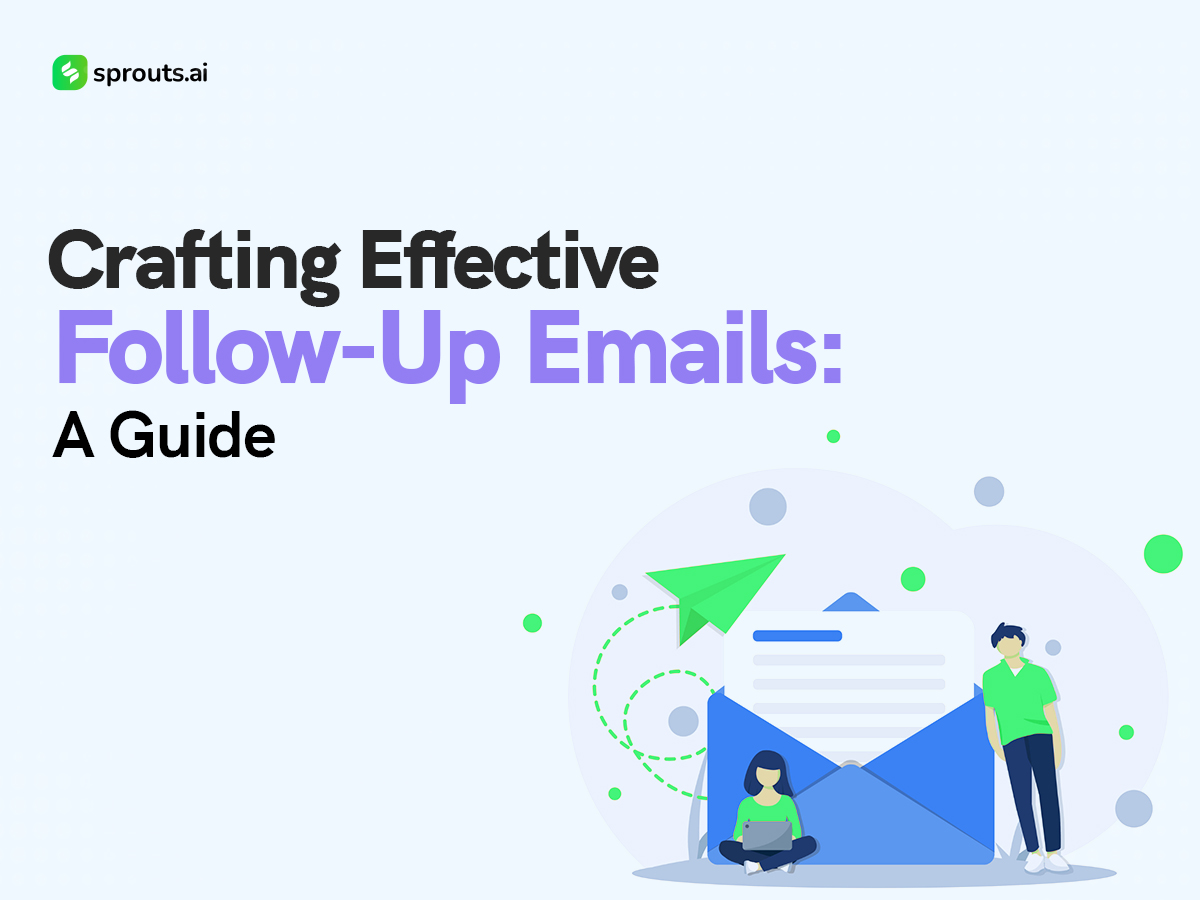Ever hit send on a perfectly crafted email, only to be met with deafening silence? You’re not alone. Countless emails vanish into the digital abyss, leaving us frustrated and wondering what went wrong. But there’s a simple solution: An effective follow-up email. This blog suggests techniques that guarantee replies every time. Read on to discover how to transform unanswered emails into successful interactions!
Understanding the Importance of Follow-Up Emails
Before diving into the specifics of crafting follow-up emails, it’s important to understand why they matter. Follow-up emails serve several purposes:
- Maintaining Communication: They keep the lines of communication open between you and the recipient, ensuring that your previous interaction isn’t forgotten.
- Demonstrating Interest: Following up demonstrates your continued interest in the recipient or opportunity, which can leave a positive impression.
- Clarifying Next Steps: Follow-up emails can help clarify any next steps or actions required from both parties, ensuring progress is made.
- Building Relationships: Regular follow-up can help build rapport and strengthen relationships over time, whether it’s with a potential employer, client, or colleague.
Key Components of an Effective Follow-Up Email
Crafting an effective follow-up email involves careful consideration of several key components:
- Subject Line: The subject line is the first thing the recipient sees, so it should be attention-grabbing yet concise. Aim to summarize the purpose of your email in a few words while avoiding generic phrases like “Just Following Up.” Instead, personalize the subject line to pique the recipient’s interest or convey urgency if necessary.
- Greeting: Begin your email with a polite and personalized greeting. If you’ve already had previous interactions with the recipient, reference those interactions to jog their memory and establish a connection. For example, “It was great meeting you at [Event Name] last week.”
- Reminder of Previous Interaction: Briefly remind the recipient of your previous interaction to provide context for your follow-up. This can help jog their memory and ensure they understand why you’re reaching out again.
- Clear Call to Action: Clearly state the purpose of your follow-up and what action you’d like the recipient to take. Whether it’s scheduling a meeting, providing feedback, or responding to a previous inquiry, make it easy for the recipient to understand what you’re asking for.
- Value Proposition: Highlight the value or benefit to the recipient in taking the desired action. Explain how they stand to gain from responding to your email or engaging with you further.
- Professional Closing: End your email with a professional closing, such as “Best regards” or “Sincerely,” followed by your name. Including a signature block with your contact information can also make it easier for the recipient to follow up with you.
- Follow-Up Schedule: If appropriate, mention when you’ll follow up again if you haven’t heard back. This demonstrates your persistence while also setting clear expectations for future communication.
Tips for Crafting Effective Follow-Up Emails
Now that we’ve covered the key components of a follow-up email, let’s explore some additional tips for crafting emails that get results:
- Personalize Your Message: Tailor your email to the recipient’s interests, needs, and preferences whenever possible. Avoid sending generic, one-size-fits-all emails, as they’re less likely to resonate with the recipient.
- Keep it Concise: Be respectful of the recipient’s time by keeping your email concise and to the point. Aim to convey your message clearly and succinctly without overwhelming the recipient with unnecessary details.
- Use Polite Persistence: While it’s important to follow up, avoid being overly aggressive or pushy. Use polite language and tone, and be respectful of the recipient’s schedule and priorities.
- Provide Value: Make sure your follow-up email offers something of value to the recipient, whether it’s information, insights, or assistance. This can help motivate them to respond positively to your message.
- Use Formatting Wisely: Use formatting techniques such as bullet points or numbered lists to make your email easier to read and digest. Avoid dense blocks of text, which can be intimidating and difficult to follow.
- Proofread Carefully: Before sending your follow-up email, take the time to proofread it carefully for typos, grammatical errors, and clarity. A well-written email reflects positively on your professionalism and attention to detail.
- Experiment with Timing: Experiment with different times and days of the week for sending follow-up emails to see what yields the best response rates. Keep in mind the recipient’s time zone and schedule when choosing the timing of your emails.
Crafting effective follow-up emails is a valuable skill that can help you navigate professional relationships and achieve your goals. By understanding the importance of follow-up emails, mastering key components, and implementing best practices, you can increase your chances of success in various professional contexts. Make sure to personalize your messages, keep them concise, and provide value to the recipient to maximize the impact of your follow-up efforts. With practice and persistence, you’ll become adept at crafting follow-up emails that yield positive results.

